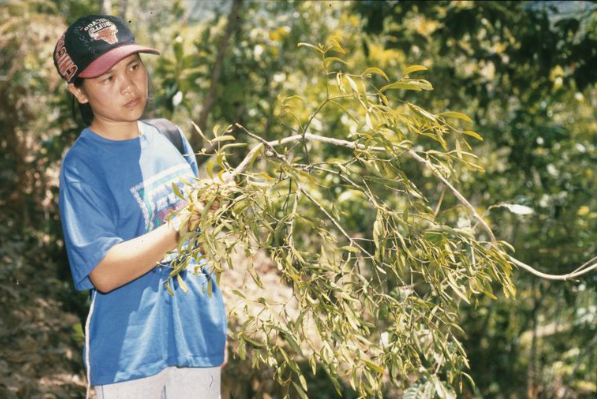 The seasonal usage of mistletoe is better known than anything about the plant itself.
The seasonal usage of mistletoe is better known than anything about the plant itself.
Elizabeth Skippington, a post-doc in Indiana University’s biology department, explores the darker side of the iconic holiday decoration.
Since 2013, Dr. Elizabeth Skippington has been a post-doctoral fellow in the Department of Biology at Indiana University. She is the lead author of the paper published on this research. She earned her PhD at the University of Queensland in 2012.
Mistletoe’s Secret

Did you know that mistletoe — the iconic Christmas decoration — is actually a parasite that attaches itself to other plants, stealing its host’s food and water?
And, while often associated with winter, species of mistletoe can be found all over the world, even, for example, amid the harsh arid conditions of the Australian outback.
We have recently found a species of mistletoe — Viscum scurruloideum — that curiously lacks several genes found in all other complex organisms.
The genes have been lost from the mistletoe’s mitochondria — a separate compartment within cells that convert food into energy – a process known as cellular respiration. Mitochondria house their own DNA due to their history as bacteria ingested billions of years ago by cells that ultimately evolved into multicellular life-forms.
Because the mitochondria of complex organisms must fulfill their primary function of powering cells, the genes that provide the blueprint for cellular respiration have remained present over time.
The loss of these genes, as discovered in Viscum, has never been seen before in any plant or animal, and adds to the already long list of wonderfully bizarre features of plant mitochondrial genomes.
For reasons we can only guess right now, this mistletoe can survive and thrive without a principal component of the main energy-producing pathway of complex organisms.
Some aspect of the mistletoe’s unusual lifestyle, as a thief of water and nutrients from its host, may allow it to take a detour from the usual path of energy production in cells.
But we can’t be certain without further study. With about 1,500 diverse varieties of mistletoe worldwide, it’s important that we continue to explore the mitochondria of these fascinating plants — and the genes they encode. Gene losses that are fatal in other plants may be tolerated by these parasites due to their unusual lifestyles.
How this happens could reveal patterns of plant evolution yet to be uncovered, and provide clues how parasitic plants specifically adapt to different hosts and lifestyles.



